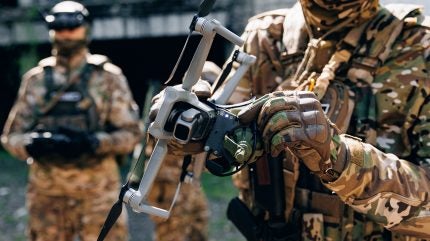
The majority of combat casualties in the Ukraine-Russia war are now being caused by one-way attack drones, superceding the lethality of artillery, while the latest battlefield understanding points to Russia having sustained 250,000 personnel killed in action since February 2022.
While the Ukraine war saw the reemergence of artillery and heavy armour as critical battlefield capabilities, once thought obsolete in the face of Western counterinsurgency campaigns, the use of drone warfare at the tactical level has signified a new epoch in modern warfare.
Innovations in doctrine, specialised units, and technological advances, such as fiber-optic guided uncrewed systems, have all contributed to the drone supplanting contemporary military platforms as the prime lethal threat.
Expanding the drone threat to include larger platforms, and the threat multiplies further. It is understood that Russia launched 10,500 glide bombs into Ukraine in March, a massive increase in firing rate from previous years.
With hundreds of tactical attack drones deployed by Ukraine and Russia daily, current understanding states that 70-80% of daily combat losses from both sides are now caused by drones.
Taking Ukraine’s claim on 8 April to have inflicted about 1,300 combat casualties on Russian forces in the preceding 24 hours, drones are likely responsible for more than 1,000 alone.
Russia nearing one million combat casualties
Meanwhile, as Ukraine’s claims of total Russian casualties continues to climb daily, now at over 926,000 military personnel, it is thought that more than a quarter of a million have been killed in action. Western estimates are broadly similar to those of Ukraine, with a generally accepted figure of 900,000+ Russian casualties.
The Ukraine war, which long since passed a combined one million casualty mark, is by far the most lethal in generations and has brought industrial level slaughter to Europe, only this time through the use of drone- and digital-era technology and efficiency.
In addition, latest calculations of North Korean military operations assisting Russian military units combating Ukraine in the Kursk region suggest Pyongyang’s forces have sustained over 5,000 combat casualties, with around one-third killed in action.
With Ukraine on the backfoot for most of 2024, the overall battlefield picture has changed little in 2025, as Russia continues to grind forwards across the eastern front. Ukraine’s incursion into Russia’s Kursk Oblast has effectively ended, with its forces thought to be holding around 60km2 across Russia’s Belgorod and Kursk regions.
By contrast, Russia occupies over 110,000km2 of Ukraine, nearly 20% of the country’s total land area.
According to an Institute for the Study of War update on 7 April, Russian forces recently advanced in the Belogorod Oblast and near Siversk, Toretsk, Pokrovsk, and Velyka Novosilka and in western Zaporizhia Oblast.
Russia has embarked on a large-scale reconstitution of its military, with President Vladimir Putin ordering the conscription of 160,000 new personnel. These are not thought associated directly with the Ukraine war, but part of a wider military buildup and a longer-term aim to subsume areas of eastern Europe into its territory.
It is thought that Russia would require around five years to build up its forces to a pre-2022 invasion strength.
In contrast with Russia, which is able to sustain battlefield losses in personnel and equipment, Ukraine is calling on a far smaller recruitment pool. Innovations in digital recruitment and conscription were intended to help alleviate this problem, to varying degrees of success.
According to Ukraine’s Ministry of Defence, in the first week of April, recruitment centres throughout the country provided 1,137 consultations to prospective recruits, with the total number standing at 49,543.
Of the near 50,000 that attended Ukrainian recruitment centres, just under 10,000 were enrolled into initial training. Ukraine initiated conscription early on in the war, with all men aged between 25-60 eligible unless they hold a medical or other waiver.



